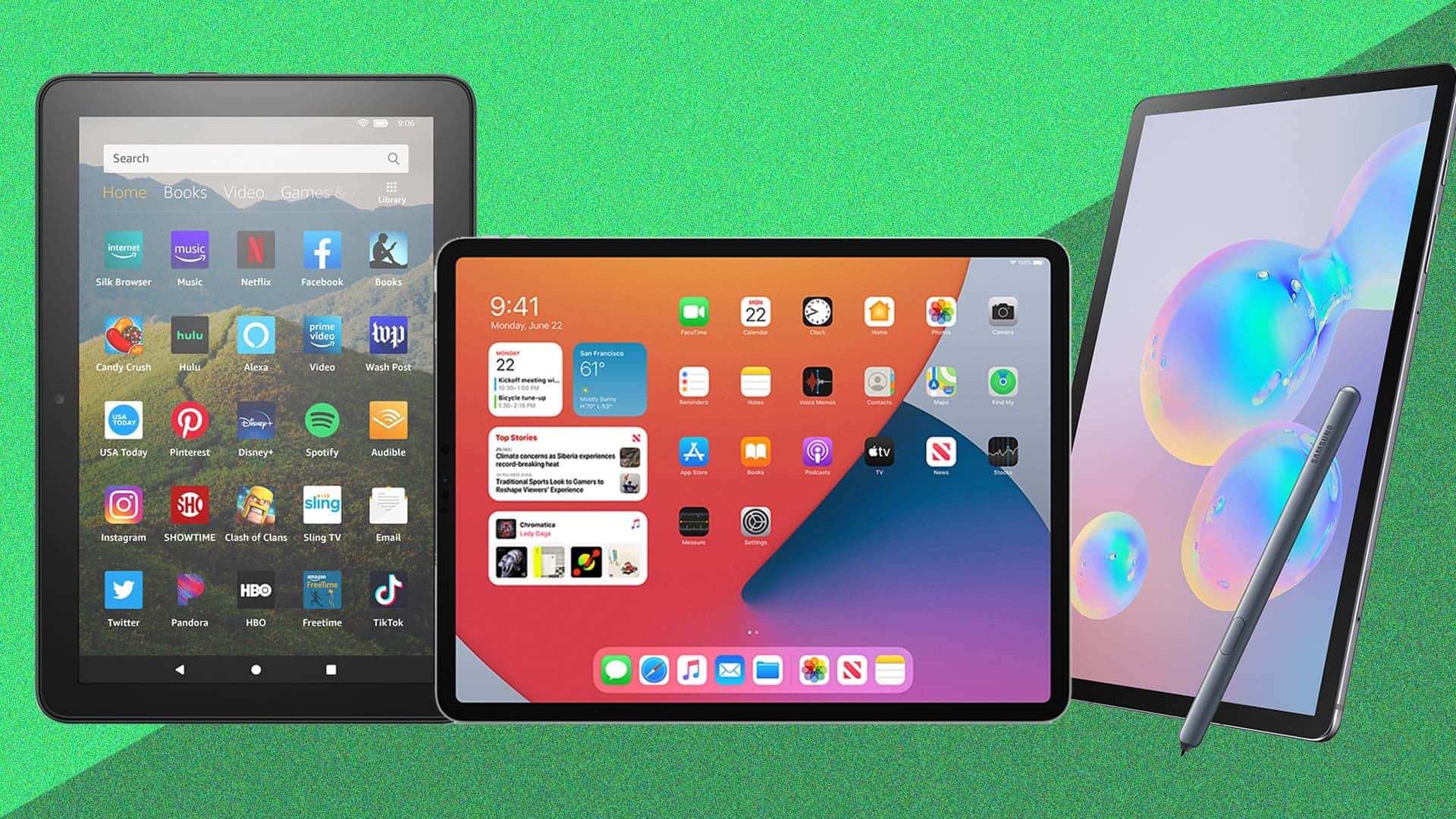After a prolonged period of decline, the global tablet market showed temporary signs of recovery in the first quarter of 2024. According to preliminary data from the International Data Corporation (IDC), global tablet shipments increased a modest 0.5% year-on-year to reach 30.8 million units. This comes after a two-year decline that began in the second quarter of 2021, largely due to market saturation.
Preview: The Tablet Market in Q1 2024
This slight uptick offers a glimmer of hope for an industry facing headwinds. However, it is crucial to keep perspective. The growth seen in the first quarter of 2024 is unlikely to replicate the surge seen during the pandemic. Also, the overall market size remains significantly lower than its peak.
Shifting Tides: Premiumization and Refresh Cycles
Despite modest growth, an interesting trend is emerging in the tablet market – an increasing focus on premium devices. As consumers increasingly look to tablets for productivity purposes, they gravitate toward models that offer more powerful features and functionality. This shift to the premium segment is a remarkable development for manufacturers.
Additionally, IDC analysts point to the start of a refresh cycle as a key driver of growth in the first quarter of 2024. This suggests that consumers may be holding off on purchases in anticipation of upcoming new models. The industry’s major players are likely gearing up to take advantage of this refresh cycle by launching new products in the coming months.
A look at the competitive landscape
In the first quarter of 2024, established players maintained their dominance in the tablet market, but with varying fortunes. Apple, the industry leader, faced an 8.5% drop in shipments compared to the first quarter of 2023. This can be attributed to both the current economic climate and the lack of new product launches during the quarter. Apple is expected to address these factors by clearing out older inventory to pave the way for the introduction of new models in the second quarter.
Samsung, the second largest player, reported a 5.8% year-on-year drop in shipments. This may be due to the combined effect of aggressive promotional strategies used by competitors and the lack of compelling new offerings from Samsung itself. However, the company is currently focusing on improving the user experience of its tablets and promoting its premium products to regain market share.
HUAWEI, on the other hand, stood out with a remarkable 43.6% growth in tablet shipments, consolidating its position in third place. This surge can likely be attributed to the resurgence of their smartphone business, indicating a potential spillover effect across their product portfolio.
Lenovo, in fourth place, achieved a 13.2% increase in shipments. This growth is due to the success of their Tab P series, which meets the growing demand for detachable tablets that offer a laptop-like experience. However, it’s worth noting that traditional tablets still dominate Lenovo’s overall shipments.
Rounding out the top five is Xiaomi, which posted a staggering 92.6% year-on-year growth. This impressive performance underscores the company’s ability to penetrate markets outside its home base in China. Xiaomi shipped an impressive 1.8 million units in the first quarter of 2024, suggesting that their aggressive expansion strategy is paying off.
Looking Ahead: Challenges and Opportunities
While Q1 2024 figures offer cautious optimism for the tablet market, challenges remain. Competition from other devices, especially laptops and smartphones, continues to limit overall growth potential. Consumers are increasingly blurring the lines between these categories, making it difficult for tablets to occupy a distinct niche.
However, there are also opportunities for growth. Analysts such as Anuroopa Nataraj of IDC believe that the growing adoption of tablets in the education sector and the gig economy holds promise for the retail segment. Additionally, the integration of artificial intelligence (AI) capabilities into tablets. Reflecting a trend already seen in other devices could revitalize the market by offering improved functionalities and experiences.
Gizchina News of the week
In conclusion, the first quarter of 2024 presented a mixed picture for the tablet market. Although the slight increase in shipments signals a potential turnaround, economic difficulties and competition from other devices remain major concerns. The success of the upcoming refresh cycles and adoption of AI features will be key factors to watch in the coming quarters. The tablet market may be recovering, but its path to sustained growth remains to be seen.
Strategies for a renewed tablet market

The tentative recovery of the tablet market in Q1 2024 presents both challenges and opportunities for manufacturers. Here’s a deeper dive into potential strategies that can push the industry forward:
1. Doubling the Differentiation:
- Feature Innovation: Manufacturers should focus on the features that differentiate tablets from smartphones and laptops. This may include advances in stylus technology for improved note-taking and creative workflows, enhanced multitasking capabilities, and optimized operating systems for a more seamless tablet experience.
- Experiment with form factor: Exploring new form factors such as foldable tablets or dual-screen designs can attract early adopters and cater to specific user needs.
- Software integration: Developing a robust software ecosystem specifically designed for tablets can be a significant differentiator. This could include fostering partnerships with app developers to optimize existing apps for the larger tablet screen. And creating tablet-specific apps that take advantage of the device’s unique capabilities.
2. Perception of the premiumization trend:
- High Performance Hardware: Targeting the productivity market by offering tablets equipped with powerful processors, ample storage and long-lasting batteries is crucial. This caters to professionals, students and creative individuals who need a device that can handle demanding tasks.
- Improved design and materials. Investing in premium build quality with sleek design and premium materials can enhance the user experience and justify a higher price point.
3. Capitalizing on market niches:
- Education sector: The development of tablets specifically designed for educational purposes, with features such as learning management system integration, durability and accessibility, can meet the growing demand in schools and universities.
- Games and entertainment: Exploring partnerships with game developers and streaming services to optimize their tablet offerings could attract a new segment of consumers looking for premium entertainment.
- Corporate solutions: Adapting tablets for business use through features such as robust security protocols, device management capabilities and integration with enterprise productivity tools can unlock opportunities within the enterprise sector.
4. Use of AI and emerging technologies:
- Integration of AI assistants: The inclusion of advanced AI assistants that can offer enhanced voice commands, contextual suggestions and proactive support can enhance the user experience and productivity potential of tablets.
- Augmented Reality (AR) Integration: Exploring the possibilities of AR in tablets can open new avenues for education, training and even entertainment applications. Imagine using a tablet to visualize historical landmarks or complex structures in AR for a more immersive learning experience.
- Focus on security and privacy: As tablets become more integrated into everyday life, providing reliable security features and a strong commitment to user privacy will be paramount.
Conclusion: A sustainable future for tablets?
The future of the tablet market depends on manufacturers’ ability to adapt and innovate. By focusing on differentiation, embracing premiumization, serving niche markets, and harnessing the power of emerging technologies like AI and AR, tablets can carve out a sustainable space in the consumer electronics landscape. The tentative resurgence seen in the first quarter of 2024 could be just the beginning of a renewed era for tablets, provided manufacturers adopt the necessary changes.








